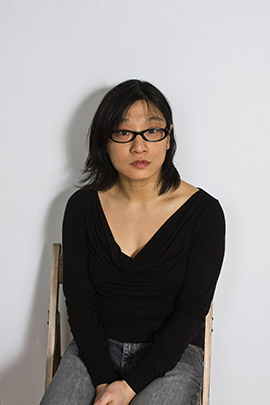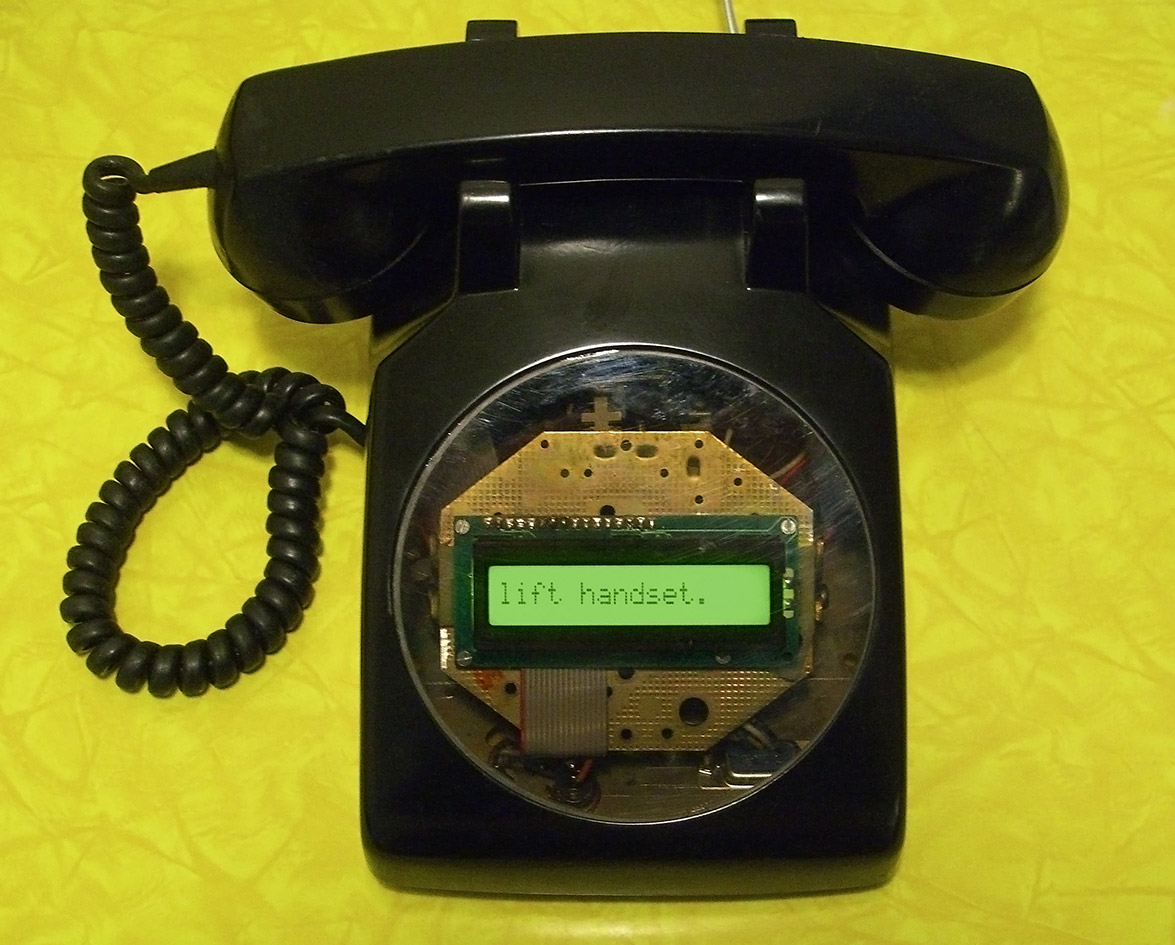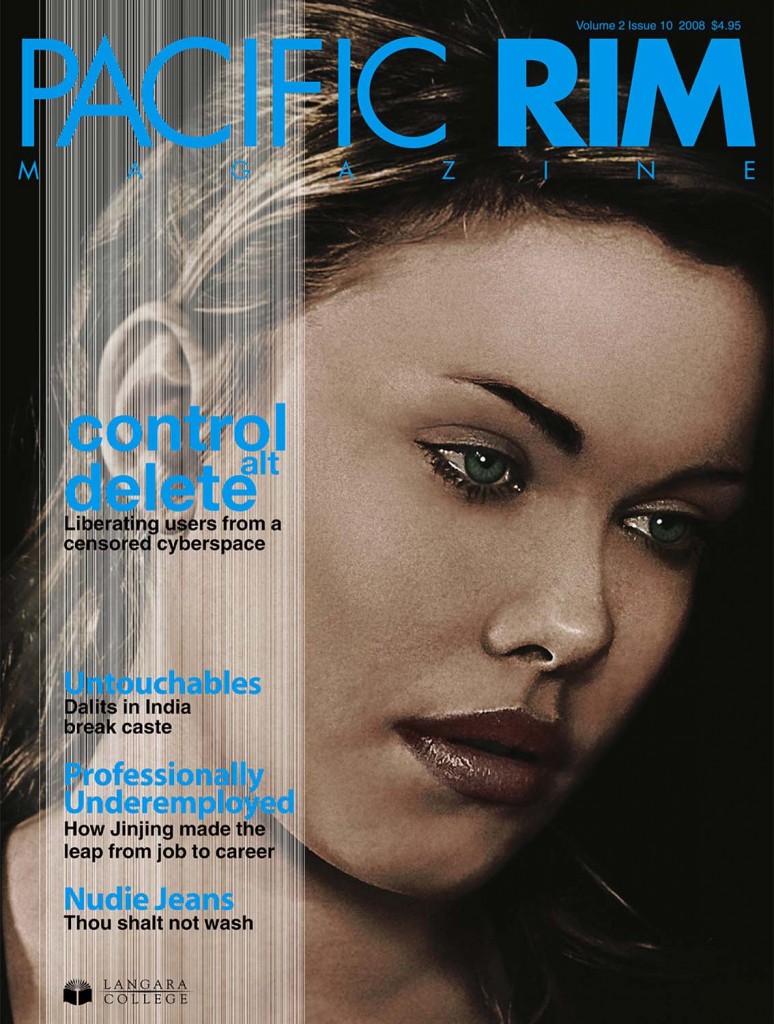You walk into the lobby of a building. There is a telephone on a table. The phone looks like a rotary taxi phone from a bar or a line to the concierge in a hotel, except the rotary dial has been replaced with an LCD screen, which reads, “lift handset.” Perhaps a little confused, you comply and place it against your ear. There is a dial tone and someone picks up. You realize there is no context for this call. The only words anywhere around the phone are on its face, “lift receiver”, and you have accomplished that. What’s next?
You talk, feeling your way through the next few minutes of dialogue with a stranger. Awkward or relaxed, exciting or bland, trivial or meaningful—the conversation could be about anything two people would talk about. When you hang up, the conversation will only exist in memory.
Koh’s works are conceived for an accidental audience
Call is a project created by Vancouver-based artist Germaine Koh. During this project Koh has placed a modified telephone in a building’s lobby. The telephone has been altered so that as soon as someone picks up the receiver it auto-dials a telephone number and connects you with a stranger, and because there is no context for the call, the conversation that ensues can take on many forms.
Koh’s works are conceived for an accidental audience. In Call, the participant is misled by the everyday qualities of object and setting: a phone set in a lobby. The artwork isn’t activated until the participant engages with it. This is a fundamental difference that separates her artwork from more traditional paintings or sculptures created beforehand and then displayed in the gallery. Her art is created in the real world, in real time.
“[Germaine] loves the idea of someone picking [up the phone] and thinking that they are trying to phone a cab,” says Milena Placentile, programme coordinator at Video Pool, a media art centre in Winnipeg where Call was exhibited in November 2007. “[They think to themselves] ‘Wait a minute, what’s going on?’ It is sort of a frisson in daily life. Just this little difference where all of a sudden you have to think in a new way about what happened and then that experience stays with you maybe a little longer than if you’re like: ‘Oh this is art, okay, now I’m having an art experience.’”
The project begins when Koh puts a listing on Craigslist for volunteers. These volunteers are integral to the project because they take the calls. When the participant picks up the phone, they are randomly connected to a volunteer and the encounter is set into motion.
When it’s over, participants are invited to share their experiences on Koh’s website. In one interaction, a volunteer and a participant shared tips on dating—the participant was preparing for a first date. After the date he came back to the telephone to try and phone the same volunteer, but because the numbers are dialed randomly he had to dial several times to find the same volunteer. Eventually they reconnected and continued the conversation post-date.
“I thought that we would find the gamut of possible phone behaviours,” Koh explains of her broad expectations, “ranging from people who would be quite rude to people who would get into quite involved conversations and then everything in between.” Judging by the varied responses found on her website, it seems she was a success.

Social, Touchable Art
Normally when you visit an art gallery, it is generally understood that the artwork shouldn’t be touched. But when you view Koh’s work, interaction is essential. When a viewer comes across a phone they understand the existing social conventions of engaging someone on the phone.
Koh describes herself as a visual artist who creates conceptually-generated work concerned with the significance of everyday actions. Her practice makes an “argument for the monumentality of these mundane dramas”: typing on a keyboard, talking on a phone to a stranger, sending a text message. When someone stumbles upon these curiosities, they don’t always realize they are interacting with art. This approach, to the curious nature of people, engages Koh’s viewers and allows them to become the catalyst of their own experience.
“I have faith that people have the ability to work through how to operate and use the pieces and also think about the issues around (them).”
Born in Malaysia, Koh immigrated to Canada at the age of two. Although she grew up in a small town, she spent her educational years in larger cities. She received a BFA in studio art and a BA in theory and art history from the University of Ottawa in 1989 and 1990 respectively. In 1993 she graduated from Hunter College of the City University of New York with a Masters of Fine Arts. She was not planning on becoming an artist; she found it to be the best fit with her wide range of interests. “I am interested in making connections between people and in creating situations in which people recognize their connection with other people.”
This common thread runs through all of her projects. With Journal, Koh posts her daily journal where she writes personal and revealing thoughts about her life in classified ads and on roadside signs. During the 2007 Ingenuity Festival, Cleveland’s festival of art and technology, her journal was displayed on an electronic news ticker in a highly populated area. Excerpts from her journal intermingled with the headlines from the day’s news. This exhibition of thoughts added a very personal touch to what is usually a very stark and cold method of disseminating information.
Koh’s attempt to reach people through small mundane outlets makes her work accessible to an audience outside the art world. Her art empowers her viewers, listens to them and gives them an outlet for their own voice. She makes connections between people without alienating them.











